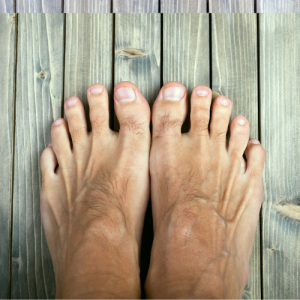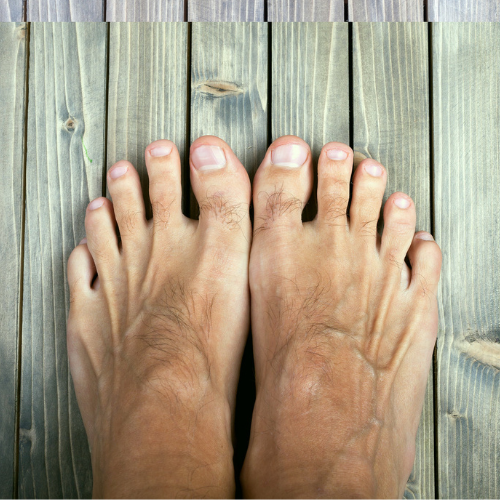 Exposure to the sun is, at times, unavoidable. Prolonged exposure to the sun’s ultraviolet (UV) rays causes sunburn, making your skin cells red, swollen, and painful. Severe sunburn can make it difficult to fall or stay asleep.
Exposure to the sun is, at times, unavoidable. Prolonged exposure to the sun’s ultraviolet (UV) rays causes sunburn, making your skin cells red, swollen, and painful. Severe sunburn can make it difficult to fall or stay asleep.
Your feet are more vulnerable because they are more exposed to the sun, and it’s easy to overlook them when applying sunscreen, or they can be washed off at the beach or pool. This may lead to swollen and sunburned feet. Ultraviolet radiation can increase the risk of melanoma. Research shows that an estimated 15% of all melanomas on the outer skin layers are on the foot and ankle. Melanoma is the most common type of foot cancer.
Immediate measures and remedies should be taken to reduce swelling and cool them while your skin heals. For pain, basic burn relief, and alleviating discomfort, you need to do the following;
- The first thing is to get out of the sunshine immediately you notice the burn, cover your feet by getting under an umbrella, shade, or going indoors.
- Cool the skin using a clean damp towel with cold water or fill a small water tub (readily available in most drug stores) with cold water. Soak your feet for no more than 10 minutes. You may add ingredients like baking soda to help reduce inflammation, oatmeal to reduce itching, and apple cider vinegar to the foot bath to assist in healing.
- Create cool compresses using washcloths by dipping them in the cold water and draping them over your feet. Never use ice because the extreme cold could hurt you.
- Ensure you cool the feet for about 10 minutes several times daily.
- Before your skin has dried completely, apply creams and ointments containing aloe vera, calamine, menthol, camphor, or soy to soothe your feet. Refrigerating the creams will also provide additional relief. Black tea and topical vitamin E are alternative home remedies.
- Take a nonprescription pain reliever to ease pain and take over-the-counter (OTC) anti-inflammatory medication like ibuprofen, naproxen, or aspirin.
- Replenish your body with plenty of water and fluids to hydrate as sunburn leads to dehydration by drawing moisture to the damaged cells.
- Avoid pressure and friction to your feet by minimizing the time you wear shoes in the first few days. Wear open-toed shoes, loosen the straps on sandals, and wear cotton socks only.
- Avoid harsh, scented soaps and soaking for a prolonged period to prevent irritating your feet.
- Avoid popping blisters as doing so might reveal unhealed vulnerable skin. If it breaks, trim off the dead skin with clean small scissors. Then apply an antibiotic ointment to the wounded area and cover it with a nonstick bandage or gauze.
- Avoid the sun until your sunburn is healed. If you must go outside, apply sunscreen with a concentration of 20% or more zinc oxide to your feet. Zinc oxide promotes healing and soothes the skin.
- Avoid pulling the peeling skin as it could cause further damage and increase the risk of infection.
- Wear loose, comfortable, breathable clothing that does not constrict the sunburn areas.
Home Remedies
Some home remedies you may try include:
- In case your feet are swollen, lie down on your back and elevate your legs.
- Make a paste of baking powder with cool water and spread it on the sunburned parts. This will alleviate pain and minimize the sunburn appearance.
- For minor skin irritation and inflammation, apply potato juice or paste
- A cool milk compress is ideal. Soak a clean piece of cloth or gauze in cold milk and apply it to the top of your feet. Re-saturate whenever necessary.
- Combine honey with high-fat plain yogurt and apply to the feet. Let it sit for 10 to 20 minutes before rinsing with cold water. Honey has an antimicrobial agent that promotes wound healing while the lactic acid in the yogurt gently exfoliates the dead skin.
Signs That You Should Seek Medical Attention
There are times sunburns aren’t able to be treated appropriately at home. You should seek medical advice if you note the following:
- If your feet are painfully covered in sunburn, you cannot walk or move around.
- You have severe blistering
- When you get a fever higher than 102 degrees Fahrenheit
- When you get prolonged periods of chills.
- When you feel dizzy, confused or exhausted
- When you notice signs of skin infection, including oozing, severe swelling, or redness.
- Your doctor may suggest different treatments based on the severity of your sunburn, which may include:
- Prescription topical creams (such as steroids) to treat skin irritation
- Intravenous (iv) fluids to treat dehydration
- Wound care if blistering or skin irritation is significant
- Antibiotics and oral steroids to reduce your body’s immune response
Recovery
Mild sunburn can clear in 3 to 5 days, while severe burns take a few weeks. Every person’s body heals differently; your recovery is determined by the severity of the burns, genetic factors, age, overall health, and how well you take care of yourself after sunburn.
Conclusion
Always wear sunscreen with SPF 30 or more whenever you are out in the sunny outdoors. Apply it generously all over your body and reapply again every 2 to 3 hours or whenever you go swimming. You can use waterproof sunscreen not only for swimming but also due to sweat. Additionally, wear sun protective clothing like hats. If you can, avoid staying in the sun for extended periods. An annual podiatric exam can help check your feet for changes or abnormalities in the skin’s color and texture. Contact Foot and Ankle Centers to make an appointment.







